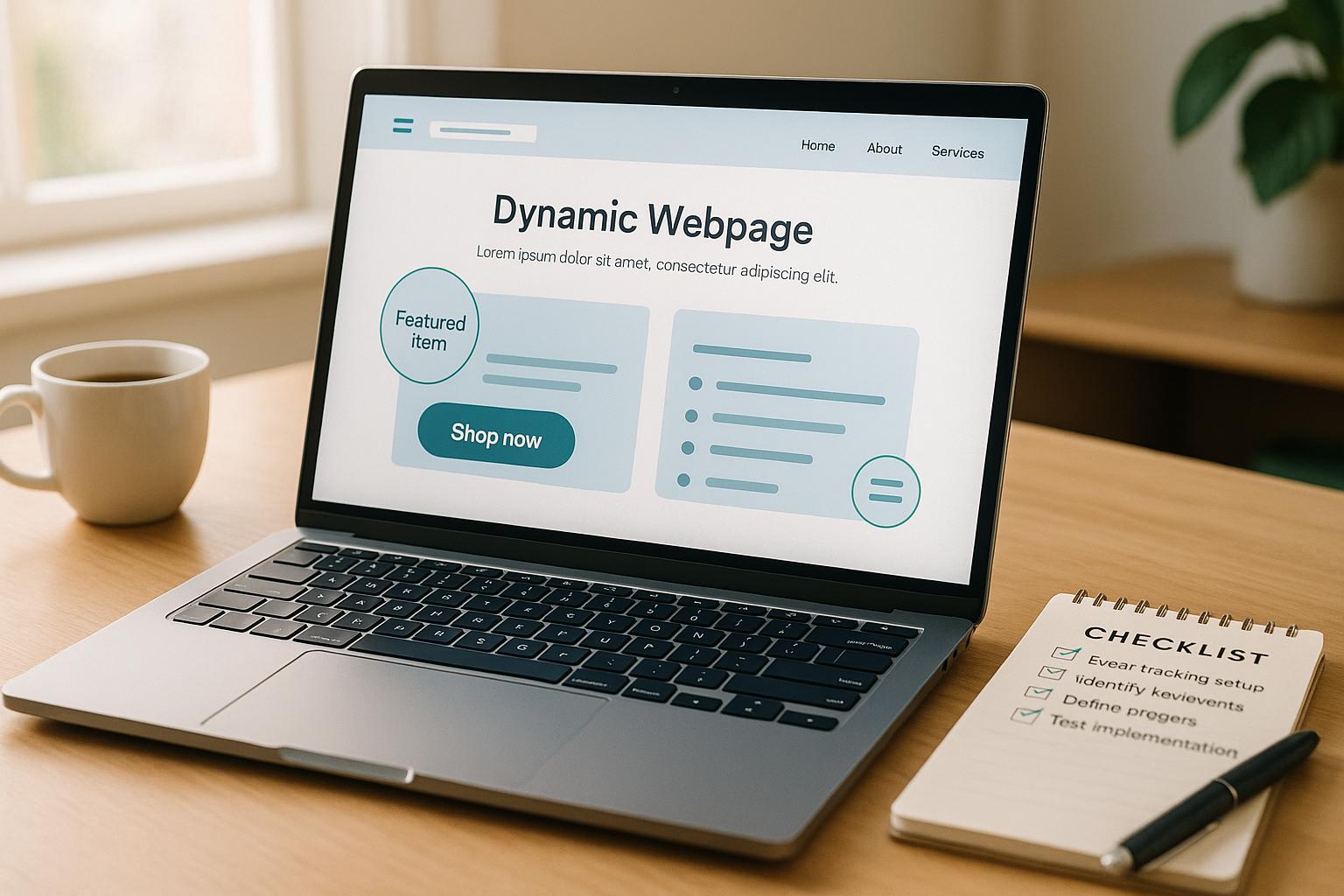Audience segmentation testing is a powerful way to improve your PPC campaigns. It helps you identify which audience groups respond best to your ads, allowing you to optimize your budget, refine your messaging, and boost ROI. Here's what you need to know:
- Why It Matters: Segmenting your audience lets you focus on the most responsive groups, tailoring ads to their specific traits.
- How to Start: Define clear test objectives, create detailed audience segments, and set measurable KPIs like CTR, conversion rate, and CPA.
- What to Do: Use tools suited to your team size, monitor key metrics, and adjust based on performance data.
- Final Step: Analyze results, document findings, and apply insights to improve campaigns continuously.
Understanding Your Target Audience for Effective PPC ...
Building Audience Segments
Once you’ve established clear test objectives, the next step is creating detailed audience segments. This helps you compare performance more accurately, identify high-performing groups, and allocate your budget more effectively.
Audience segmentation involves breaking your market into smaller groups based on traits like demographics, interests, or purchase intent. This process helps pinpoint which groups deliver the best ROI and informs targeted ad strategies.
Make sure to focus on characteristics that align with your campaign goals and reflect U.S. consumer behaviors.
Key Segmentation Factors
U.S. Market Considerations
Test Setup Guidelines
Once you've identified your segments, it's time to create a system to evaluate their performance effectively.
Test Structure and Goals
Define clear, measurable goals for your segmentation tests. Your framework should include:
- Segment hypothesis: Outline what you aim to learn from each segment.
- Success metrics: Pinpoint key performance indicators (KPIs) that align with your campaign objectives.
- Control group parameters: Establish baseline audiences for comparison purposes.
- Duration: Set timeframes that align with your campaign's typical response cycles.
After setting up this structure, customize your creative materials to match each segment's characteristics.
Segment-Specific Content
Tailor your content to resonate with each segment:
- Ad copy: Write messages that address each segment's specific challenges or needs.
- Visual elements: Choose images and graphics that align with the demographics of your segments (consider U.S. demographics when relevant).
- Offers: Create promotions that cater to the unique motivations of each group.
Aligning your copy, visuals, and offers with segment profiles can significantly improve engagement and drive conversions.
Testing Tools and Resources
To streamline your testing process, select tools that match the scale of your team and campaign:
- Small teams: Use lightweight PPC tools to automate repetitive tasks.
- Mid-market teams: Opt for platforms that provide workflow automation and robust reporting features.
- Enterprise teams: Choose solutions that offer full data integration and advanced capabilities.
When evaluating tools, focus on their ability to integrate with your systems, automate processes, generate detailed reports, and ensure compliance.
For a comprehensive list of tools, check out the Top PPC Marketing Directory. It provides insights into various platforms and their features to help you find the best fit for your testing needs.
sbb-itb-89b8f36
Running and Managing Tests
Once your tests are live, it's crucial to keep an eye on their performance and make adjustments as needed.
Key Metrics to Monitor
Focus on metrics like click-through rate (CTR), conversion rate, and cost per acquisition (CPA). These numbers help you understand how well each segment is engaging, converting, and performing in terms of cost.
Adjusting and Improving Tests
Leverage the performance data to fine-tune your segments. Here’s how you can approach it:
- Expand high-performing segments: If a segment is doing well, consider increasing its reach or budget.
- Optimize average performers: Adjust messaging, bids, or formats to improve their results.
- Phase out low performers: Stop investing in segments that consistently underperform.
Document every change you make and analyze the results. This will help you continuously improve and get the best return on your investment (ROI).
Results Analysis and Implementation
Once testing is complete, it's time to break down the results and use the insights to improve your campaign's performance.
Reviewing the Data
To make sense of the results, look at the data from different angles:
Statistical Significance
- Ensure differences between segments meet your confidence threshold.
- Compare how each segment performed against your control group.
- Verify that sample sizes are large enough to draw reliable conclusions.
Cross-Segment Trends
- Look for recurring demographic or behavioral traits among top-performing segments.
- Identify patterns that emerge across time periods or campaign objectives.
- Use these insights to fine-tune how segments are defined.
ROI Metrics
Analyze key metrics like cost per acquisition, lifetime value, engagement, and retention. This will help you pinpoint the segments that bring the most long-term value.
Documenting Results
Once you've reviewed the data, organize your findings and outline steps for applying them.
How to Document Tests
- Record your initial hypotheses and testing parameters.
- Clearly define each segment you tested.
- Note any adjustments made during the test period.
- Include external factors like seasonality, market trends, or budget changes.
Applying the Findings
-
Segment Optimization
- Fine-tune targeting criteria for segments that performed well.
- Adjust bidding strategies based on the value of each segment.
- Update creative assets to better match audience preferences.
-
Resource Allocation
- Shift more budget toward your highest-performing segments.
- Scale up successful targeting strategies to increase impact.
- Phase out or rework strategies for segments that underperformed.
-
Planning Future Tests
- Experiment with new segmentation ideas inspired by your current findings.
- Schedule follow-up tests to confirm and expand on your learnings.
- Regularly review performance data to keep improving over time.
Summary
Using data-driven audience segmentation can improve PPC targeting, increase conversions, and maximize ROI. To maintain growth, it's essential to regularly plan, test, analyze, and adjust your audience segments. Whether you're new to PPC or a seasoned pro, the Top PPC Marketing Directory can help you find trusted tools and agencies to simplify your testing efforts.


